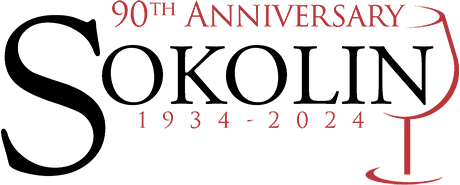Lightly toasted marshmallow and macadamia nut aromas lead the way, followed by incredibly juicy mirabelle plum, green fig, and glazed pear and peach flavors. As big as this is, there are still plenty of honeysuckle, quinine and chamomile notes kicking the finish into yet another gear. This has purity and length to burn, with decades more to go. Best from 2020 through 2050. 6,665 cases made.Wine Spectator | 98 WSBright aromas of sliced mangoes, papaya, botrytis, and lemon follow through to a full body. Medium sweet with a phenolic palate that gives the wine structure and beauty. Electric acidity and freshness combined with impressive energy and length. A strict selection was made. 40% of the production was destined to the grand vin. About 80,000 bottles made. This is 70% semillion and 30% sauvignon blanc. Better in 2018.James Suckling | 98 JSThe beautifully aromatic, honeyed scent leads into flavors of bitter orange and honey, along with extreme freshness. Notes of white peach and Rocha pear give richness to a wine that is not huge, but wonderfully balanced.Wine Enthusiast | 97 WEFirstly, you notice the color, which is a touch deeper than recent vintages at this stage. The bouquet is quite honeyed and rich for Yquem at this early juncture, with subtle scents of peach skin, white flowers, and a puff of chalk and frangipane. The palate is viscous on the entry, all about the texture at first, coating the mouth with luscious botrytized fruit. There are touches of Seville orange marmalade, fresh apricot, a hint of spice and passion fruit. This is imbued with impressive depth and weight, perhaps an Yquem that is determined to make an impression after last year-s absence. It might not possess the finesse of a top flight Yquem, but it has immense power and persistency.A majority of the 2013 Chateau d-Yquem was picked between September 25 and October 2, augmented by a second trie on October 11 after rains had provoked botrytis and then a third trie from October 21 and 24, before a final pass through the vineyard at the end of the month. Winemaker Sandrine Garbay told me that all the lots were used, but only 40% of the crop made it into the final blend, which equates to around 70,000 and 80,000 bottles. During assemblage of different lots, the blend ended up 30% Sauvignon Blanc, a little higher than usual, and 70% Semillon, while the residual sugar comes in at 140gm/L, which is a little higher than average. The reason is that the fermentation stopped naturally at this level, therefore the alcohol is a tad lower than average at 13.1 degrees.Robert Parker Neal Martin | 95-97 RP-NMExcellent intensity and density for this vintage, with ripe pineapple and mango flavours. High residual sugar at 140 grams per litre balanced by fresh, crisp acidity. Drinking Window 2021 - 2030.Decanter | 95 DECThe 2013 Yquem is a wine that I tasted from barrel but for some inexplicable reason, never in bottle. It was picked over four tries from 25 September to 24 October. There is 140g/L residual sugar. As it was a relatively late vintage, they elected to use more Sauvignon Blanc (30%) to engender freshness. I feel this does not possess the dimension of the 2011 on the nose, clean and crisp, certainly well defined, yet maybe just denied amplitude by the growing season. The palate is well balanced and pure, very harmonious with fine weight. Here, there is more complexity than intimated by the nose, lightly spiced with Seville orange and marmalade towards the finish. Fine. Tasted at the château.Vinous Media | 92 VM
